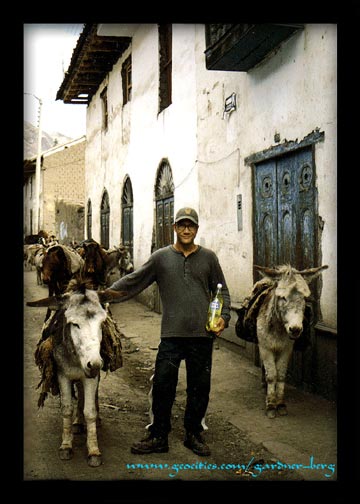
| Translate: EspaŮol - FranÁais - Deutsch - Italiano - PortuguÍs - Japanese - Korean - Chinese |

| Translate: EspaŮol - FranÁais - Deutsch - Italiano - PortuguÍs - Japanese - Korean - Chinese |

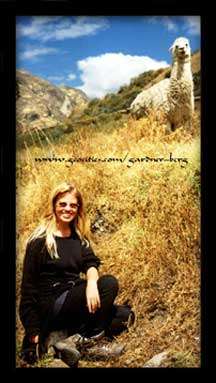 MAY 9, 2000 -- After a long but picturesque, ride through a winding roads to
the Ecuador/Peru border we begin our descent toward sea level where the terrain
is flatter, drier and desert-like. We've reached the north Peruvian coast.
We felt a little relieved to get to sea level where roads are straighter and in
better condition.
MAY 9, 2000 -- After a long but picturesque, ride through a winding roads to
the Ecuador/Peru border we begin our descent toward sea level where the terrain
is flatter, drier and desert-like. We've reached the north Peruvian coast.
We felt a little relieved to get to sea level where roads are straighter and in
better condition.
The first sight of Peru from the bus windows, however, did not strike us as a good first impression. The landscape, desolate and threatening , were dotted with shacks made of bits of garbage. It doesn't seem like the kind of environment that Peru could make economically viable. But apparently, when the land is irrigated, its river valleys forming oases become extremely fertile producing such crops as sugarcane, rice and export crops like asparagus here in the north and grapes, fruit and olives in the south. Not to mention the good harvests from the ocean. Cotton is also grown right throughout the country. Half of Peru's exports are supplied from the coastal region.
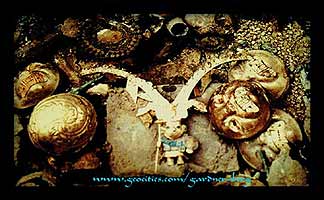 The climatic phenomenon: 'El Nino' is said to have been known since the time of the Incas. Under somewhat normal circumstances, warm currents off the coast north of the equator bring rains to Colombia and Ecuador, and prevailing winds from the west bring temperate rains to mid Chile and southwards. At the same time, across the Pacific from Indonesia towards Peru along the equator there is a huge body of warm water which is normally kept away from the South American west coast by prevailing trade winds from the east most of the time. This allows the cold currents flowing northwards up the coast of northern Chile and
Peru to produce the very dry and desert-like conditions for 2000 kms to where we are now; on the Panamerican Highway heading southward to Piura. But, at certain times, during a 10 year period, this normal cycle is disrupted by 'El Nino' where that huge body of warm water moves southward sometimes as far as
The climatic phenomenon: 'El Nino' is said to have been known since the time of the Incas. Under somewhat normal circumstances, warm currents off the coast north of the equator bring rains to Colombia and Ecuador, and prevailing winds from the west bring temperate rains to mid Chile and southwards. At the same time, across the Pacific from Indonesia towards Peru along the equator there is a huge body of warm water which is normally kept away from the South American west coast by prevailing trade winds from the east most of the time. This allows the cold currents flowing northwards up the coast of northern Chile and
Peru to produce the very dry and desert-like conditions for 2000 kms to where we are now; on the Panamerican Highway heading southward to Piura. But, at certain times, during a 10 year period, this normal cycle is disrupted by 'El Nino' where that huge body of warm water moves southward sometimes as far as
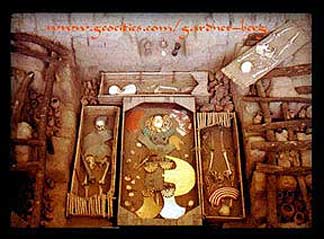 northern Chile. This change in direction ultimately results in devastating floods to areas that normally receives no rain at all. The damage caused by 'El Nino' of 1997-98 was extensive and almost impossible to recover from. The economic damage on the land can be enormous, but there is also the effect on the ocean itself. The food cycle is disrupted, the fish disappear and the seabirds starve. Normal ecological recovery from this incredible natural event would take a long time.
northern Chile. This change in direction ultimately results in devastating floods to areas that normally receives no rain at all. The damage caused by 'El Nino' of 1997-98 was extensive and almost impossible to recover from. The economic damage on the land can be enormous, but there is also the effect on the ocean itself. The food cycle is disrupted, the fish disappear and the seabirds starve. Normal ecological recovery from this incredible natural event would take a long time.
We arrive in Piura - founded by the Spanish conquistadors - left behind by Francisco Pizarro - in 1532 making it Peru's oldest colonial city. We stayed in this city for only a night but one outstanding feature were the use of 3-wheeled motorised rickshaws - tuk tuk - like those used throughout SE Asia; though not as racy and suped-up like those in Bangkok but good enough to serve as cheap taxis. The weather was hot and the walk from the bus station to seek accomodation with our gear had us a little slow to adjust to the change in temperature and altitude to sea level. Judging from curious stares from passing locals, Piura doesn't seem like a place that receives many foreign travellers.
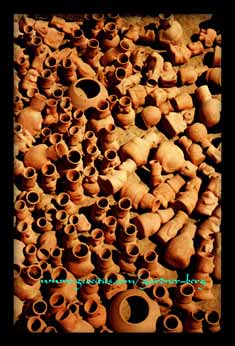 MAY 10, 2000 -- We leave Piura on a bus heading out for 264 km along the coast
to the next oasis city of Chiclayo, passing the Sechura Desert - a large area
of shifting sand that separates these 2 oasis centres.
MAY 10, 2000 -- We leave Piura on a bus heading out for 264 km along the coast
to the next oasis city of Chiclayo, passing the Sechura Desert - a large area
of shifting sand that separates these 2 oasis centres.
With a population of 280,000, Chiclayo is said to be one of Peru's fastest growing cities becoming a major commercial hub. It also has nearby, unparalleled archeological sites which is what we came to see. We base ourselves in cheap accomodation close to Mercado Modelo which unfortunately is an area of the city that doesn't quite reflect its self-proclaimed label as a major commercial hub. The dusty unmaintained streets and decrepid buildings have 'fixtures' in the form of unemployed men with plenty to say but nothing in mind. But we know, through a little experience in the past that it's all just to provoke a reaction from us. It seems 'El Nino' of 97/98 really hit this area hard; and at the same time, the effects of the economic crisis in Asia has placed a hold on the much needed export earnings for the nation.
 MAY 11, 2000 -- We catch a Combi near our hotel and head to Lambayeque,
NW of Chiclayo (12 kms) where the Bruning Archaeological Museum is
situated. The building houses a collection of fine artifacts and information
of Mochica, Lambayeque, and Chimu cultures.
MAY 11, 2000 -- We catch a Combi near our hotel and head to Lambayeque,
NW of Chiclayo (12 kms) where the Bruning Archaeological Museum is
situated. The building houses a collection of fine artifacts and information
of Mochica, Lambayeque, and Chimu cultures.
The next morning we head to the township of Tucume where from there, we walk for about 15 mins to a huge excavation site.
35 km N of Chiclayo, beside the old Panamericana to Piura, lie the ruins of this vast city built over a thousand years ago. A short climb to the mirador atop Cerro la Raya ( or 'El Purgatorio') offers an unparallelled panoramic view of 26 major pyramids, platform mounds, walled citadel and residential compounds flanking a ceremonial centre and ancient cemeteries. One of these pyramids, Huaca Larga, at 700m by 280m at the base and over 30m high is ranked as the worlds largest adobe structure.
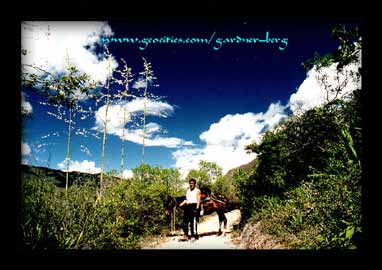 Evidence suggests that Tucume was built by the Lambayeque people between 1000 and 1400AD. The Chimu conquered the region, establishing a short reign until the arrival of the Inca around 1470.
Evidence suggests that Tucume was built by the Lambayeque people between 1000 and 1400AD. The Chimu conquered the region, establishing a short reign until the arrival of the Inca around 1470.
Excavations at the site, which were once led by Norwegian explorer - archaeologist Thor Heyerdahl of 'Kon Tiki' fame, are quickly challenging many conventional views of ancient Peruvian culture.
From Mercado Modelo we walk for about 20 mins to a terminal area where minibuses can be caught going to Sipan (40 mins) along a dusty road heading east.
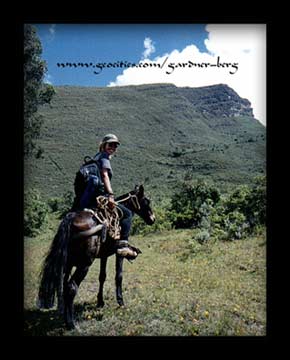 A group of agricultural Indians known as the Moche occupied this region from around 100 AD until the end of the 7th century, successfully building a large society in this desert margin between the Andes and the Pacific extending their territory 220 miles along the coast.
A group of agricultural Indians known as the Moche occupied this region from around 100 AD until the end of the 7th century, successfully building a large society in this desert margin between the Andes and the Pacific extending their territory 220 miles along the coast.
On February, 1987 the director of the Bruning Museum, Walter Alva was called in to meet with the Chief of Police to view some artifacts confiscated after a raid of a looter's house. The Moche built huge monuments of sunbaked mud bricks and laying within them their noblest dead. Also buried in the tombs were gold, pottery and weavings so alluring that it was rare for archaeologists to find a major tomb intact and unplundered. Mr. Alva was expecting to view nothing more than leftovers of an already pillaged site. What was shown before him were no castoffs. Among the 33 items were gilded copper faces baring fangs made of shell, a pair of gold peanut shells 3 times their natural size - wrinkled and ridged precisely like the real thing. A gold head with large eyes made of lapiz and silver was also among these incredible finds along with a gold decorated bracelet and flute.
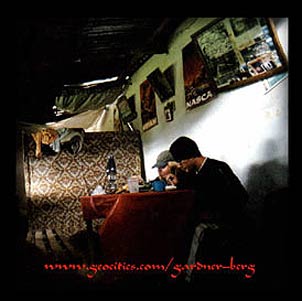
The tradition of the grave looter (or 'huaquero') can be traced back to the time of the Spanish conquistadores around 1532 beginning with the ransacking of the Inca Empire for gold, silver and precious stones. The Moche shrines were no exception. In the 17th century, looters even diverted the Moche River to undercut a pyramid. Across time many of these ancient adobe structures, called 'huacas' by Peruvians today, have yielded enough pottery, jewellery, goldwork and other antiquities supplying the huge, and still growing, demand of generations of collectors. Huaqueros work at night under very dangerous, and life-threatening conditions. They would even post armed lookouts in case of a police ambush. The risks are worth the trouble. It's big business. On the black market, the twin of the gold head mentioned above was for sale for $US60,000.
The excavation site at Sipan consists of a twin pyramid complex from which revealed no less than 5 royal tombs filled with 1800 year old offerings worked in precious metals, stone, pottery and textiles.
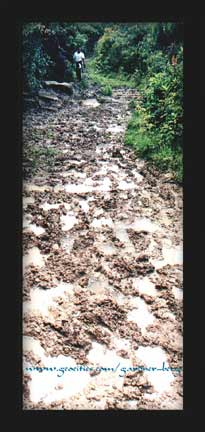 The most elaborate of these tombs discovered - the Lord of Sipan - a warrior priest clad in full regalia of gold and copper decorated with turquiose and precious stones. Also, present with him in the same tomb, were 2 women, 3 men and a dog - supposedly sacrificed to serve the warrior priest in the afterlife as they had before his death.
The most elaborate of these tombs discovered - the Lord of Sipan - a warrior priest clad in full regalia of gold and copper decorated with turquiose and precious stones. Also, present with him in the same tomb, were 2 women, 3 men and a dog - supposedly sacrificed to serve the warrior priest in the afterlife as they had before his death.
From the detail and artwork of the items found in these tombs, new light on the Moche has revealed a pre-Incan society of extraordinary size and wealth.
They farmed a series of river valleys draining the Andes along a stretch of Peru's northern coast. From roughly 100 - 700 AD, the Moche irrigated crops such as corn, beans, squash and peanuts amid searing desert environment. They ate llamas and guinea pigs and caught fish from the nearby Pacific. Their valley settlements were distinguished by great pyramids and platforms of adobe brick. It's theorised that farming techniques in the time of the Moche produced 25% more produce than those used on the north coast today.
The Moche had no writing system. But archaeologists are able to reconstruct their culture and rituals, and even identify key individual figures from the excavated art found in these tombs. Principal deity: Ai Apaec (decapitator/destroyer), symbols: Spider, Owl, Peanut.
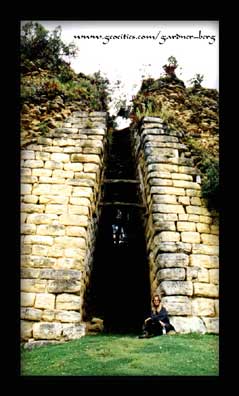
MAY 15, 2000 -- A particularly dry and hot morning, especially during our walk with our packs down the busy and dusty streets from the hotel to a section of bus offices about a km south. City taxis monopolise what little traffic space available, with the odd confrontation between drivers, fighting for customers. With traffic jams so commonplace in this small city, it would be cheaper and faster just to walk.
We embark on a 13 hour (230kms) trip heading eastward and upward into the Andes bound for Chachapoyas, arriving 6am the next morning. Wandering around the streets of this very friendly and pleasant town was refreshing; the morning air, cold and dry with light fog. We find a place to hang our hats for a few nights at the town plaza.
Chachapoyas (2234 m.a.s.l.) situated on the eastern slopes of the Andes was founded in 1538.
MAY 20, 2000 -- A 2 hour combi ride on gravel road south to the village of Tingo, consisting of 1 hostal, 2 restaurants, a general store and a police station. There is no electricity or running water but our stay was very comfortable.
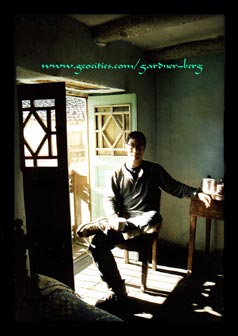
The next morning we decide to hire a horse to help us with the hike up to the ruins of Kuelap (3000 m.a.s.l.). We were unlucky enough to get a small, intelligent, but stubborn horse. As the long hours pass by during the ascent, an attachment grew for our 4-legged companion, so we dubbed him 'Horse With No Name' and sang that song throughout the hike. We stay at very basic accomodation near the ruin site for a night. The old lady that owns the place was quite a character and very hospitable - took care of us and our horse. A tough old lady.
MAY 22, 2000 -- After a hearty breakfast provided by our hosts, we take a short walk to the ruins. Kuelap (or spelt Cuelap) is a pre-Inca walled city fortress at an altitude of 3100 m.a.s.l. on top of a mountain crest above a river. This ancient city consists of small circular houses and stairways, all of which is completely surrounded be a high wall of stone as protection from invaders. This area was populated some 600 years before the Inca Empire expansion by
the 'Chachapoya' tribe or 'People of the clouds'. Kuelap is one of hundreds of ruins dotted around 10,000 sq. miles of dense forest on rugged terrain at high
 altitude. It would be a huge undertaking to find all of these places.
Unfortunately, and not surprisingly, these sites are not within reach of huaqueros (grave robbers). In 1997, efforts have been by made by archaeologists in conjunction with the Peruvian government to get ahead of the looters. So strong is the international demand that we think that huaquero methods would become more aggressive - to the point of official corruption and, quite easily, murder.
altitude. It would be a huge undertaking to find all of these places.
Unfortunately, and not surprisingly, these sites are not within reach of huaqueros (grave robbers). In 1997, efforts have been by made by archaeologists in conjunction with the Peruvian government to get ahead of the looters. So strong is the international demand that we think that huaquero methods would become more aggressive - to the point of official corruption and, quite easily, murder.
After a couple of hours walking through the citadel we notice heavy rainclouds building up. Fearing a long slippery hike back, we head back to grab our little horse, say our goodbyes and reluctantly begin our muddy descent to Tingo.
Photos and Text Copyright © 1999-2001 Gardner-Berg. All rights reserved.
Sources of Further Reading-
Muscutt, Keith. "Warriors of the Clouds: A Lost Civilization in the Upper Amazon of Peru". 1998

